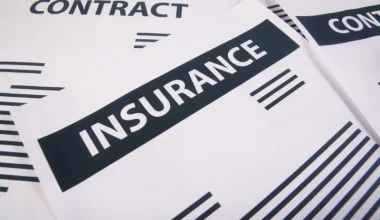Insurance companies don’t want to take on excessive risk by offering coverage to a company that is most likely to lose significant liability litigation. You might have problems finding enough insurance coverage if your company has a history of losing liability cases or if you work in a particularly litigious sector of the economy.
By adding additional insurance policies to your primary coverage, you can compensate for this weakness, but there may still be a coverage gap. Even though the majority of your legal expenses may be covered by insurance policies, if the lawsuit is sufficiently large, a coverage gap may be enough to put you into bankruptcy. Buffer Liability Insurance can assist in filling any coverage voids left by other policies for many firms that are exposed to significant risks that are challenging to insure.
In this article, we review Buffer insurance and all that it entails.
What is Buffer Insurance?
Buffer insurance is used to describe the insurance coverage that bridges the gap between a primary insurance policy and excess protection. Insured parties employ buffer layers to reduce the price of insurance payouts for big, complicated risks.
Furthermore, although they frequently serve as liability insurance, buffer layers can also protect against other types of liabilities. Additionally, they are ideal for people and firms that would be more difficult to insure or that might face a higher level of risk, like trucking companies and condo associations.
How Buffer Insurance Works
Insurance plans offer protection against losses for both individuals and businesses. They seek the assistance of insurance providers to obtain coverage. Through the underwriting process, insurers evaluate the level of risk and determine the premium that the insured party must pay to be covered.
Primary insurance refers to contracts that protect against triggering events. Anything that underwriters think will result in the insurance company’s liability taking effect is referred to as a triggering event.
Instances of inland flooding, for example, result in the payment of claims made under flood insurance. However, this type of insurance may only pay out up to a given cash amount or for a certain level of risk. As a result, insured people could need additional security, which is where excess coverage comes into play.
The ability to expand coverage beyond core plans is provided by excess insurance. However, some insurers may only accept claims that exceed a specific dollar limit. It leaves a $300,000 buffer, for instance, if your primary insurer only pays out $200,000 and the excess coverage only begins at $500,000.
That space is filled by a buffer layer. It is supplemental insurance that insured parties may obtain to safeguard themselves from any omissions from their primary and excess policies. In the aforementioned illustration, the buffer layer fills the $300,000 gap. Although it is frequently used as liability insurance, as mentioned above, it can also be used for other kinds of claims. Below, we go into further detail.
Who should purchase Buffer Layer Insurance?
Buffer layer insurance may not always be required for those who face numerous, substantial, or complex hazards. As a result, it is more frequently employed by businesses than by individual consumers, particularly those who struggle to obtain insurance.
You might want to think about purchasing buffer layer insurance if you work in one of the following industries:
- Trucking companies
- Condominium associations
- Apartment complexes
This can be a smart alternative for you if you own a business and have encountered a lot of claims or losses. Additionally, people who work in specific professions, like doctors, dentists, and lawyers, may also profit.
What are the benefits of a buffer?
#1. The insurance coverage known as the buffer layer guards against losses that happen between the main and excess insurance plans.
#2. When the excess insurance begins to pay out at a value greater than the primary insurer’s cap, buffer layers are required.
#3. Along with other claims, this sort of insurance is frequently utilized for liability protection.
#4. When the going is easy, buy buffer layers because they will come in handy when the going is bad and the market gets hard.
#5. Businesses with higher risks, such as trucking businesses, condo associations, and apartment buildings, are ideally suited for buffer layers.
What is a Corporate buffer?
Corporate Buffer is a pooled insurance program designed at the organizational level to help employees in times of medical need, particularly for serious illnesses. If the insurer agrees and the employee’s family floater coverage has been exhausted, it may also be utilized for treatments other than those for serious conditions.
Furthermore, when an employee requests assistance, organizations keep a set buffer amount on hand and decide whether to deduct money from it. Employees, as well as their spouses and children, are typically covered.
How can an Employee Avail of the Corporate Buffer?
A corporate buffer can be used if a worker or a member of his family has a serious illness. However, it is up to the employer to decide whether to offer the employee this buffer. Employees who wish to use a corporate buffer under employer-employee insurance must submit a request letter and the necessary paperwork.
- The medical condition is confirmed by medical reports.
- The medical certificate mentions the necessary procedure.
- Full records of medical care
- Estimated total cost of the procedure
- Documents proving that the family floater plan’s promised amount for the employee has been used up
It should be highlighted that in order to qualify for this benefit, the urgent medical care needed must fall within the category of a serious disease.
Why is Critical Illness included in Corporate Buffer?
Medical emergencies designated as critical illnesses are covered by the corporate buffer. By including critical illness coverage in the corporate safety net, the financial burden on the employee is lessened. A business buffer can help because the cost of treating a critical disease is typically higher than the ordinary medical price. Additionally, most common policies do not cover serious illnesses.
What may not be Covered in Corporate Buffer?
#1. Maternity cost:
Most of the time, businesses don’t cover pregnancy and any conditions associated with it. However, the employer retains ultimate decision-making authority.
#2. Excessive cost:
The employer often pre-determines and pre-approves the corporate buffer amount. The employee is responsible for paying the difference in costs if the cost of the treatment exceeds the predetermined amount.
#3. Limit on room charges:
As previously noted, each sub-section’s corporate buffer amount is pre-determined and pre-approved. Therefore, if the per-day hotel occupancy charge goes beyond the predetermined cap, the employee is responsible for covering the extra cost.
Buffer Insurance Texas
The American company called Buffer Insurance has its headquarters in Texas at 550 Reserve Street, Suite 250, Southlake, TX 76092.
550 Reserve Street, Suite 250, Southlake, TX 7609
What is Legal insurance?
Legal insurance, commonly referred to as prepaid legal or group legal, offers insurance that gives people and families access to a network of competent lawyers. Participants in legal insurance can obtain advice, have documents prepared and examined, consult, or be represented in court—typically at a fraction of the cost of engaging an attorney.
How does legal insurance work?
Legal insurance is frequently present in a package of job benefits. In order to receive the benefits, employees might choose to join a plan by paying a small monthly premium or an annual charge.
Furthermore, these strategies make use of a network of lawyers who have consented to render services under the terms of a contract with an organization. If you consult with an attorney in the network of the plan, there usually aren’t any bills, deductibles, or claim forms to fill out.
What does legal insurance cover?
Legal insurance often covers a variety of legal situations, with the exception of some, like those that involve the workplace. The areas and situations that they normally cover are as follows:
- Wills and estate planning – Last will trust funds, asset distribution, etc.
- Relationship changes – Marriage, separation, divorce, etc.
- Family law matters – Custody, adoption, child fostering, etc.
- Real estate – Buying or selling a house, land disputes, etc.
- Minor legal infractions – Traffic violations, civil cases, property disputes, etc.
- Consumer protection – False advertising, unfair business practices, etc.
- Bankruptcy – Choosing which chapter to file, associated legal proceedings, asset protection, etc.
- Personal protection – Identity theft, fraud, etc.
- Contract law – Understanding, interpreting, and identifying potential issues such as loopholes, handling sensitive information, compliance, etc.
- Sending kids to college – Security deposit costs, lease documents, student loans, etc.
- Caring for aging parents – Nursing home agreements, Medicare/Medicaid, hospital bills, etc.
What does buffer mean in the IT industry?
A buffer is a storage device used while transmitting data from one device to another to account for differences in the rate of data flow or the timing of events.
What are the limitations of a buffer?
Excessive expense: The employer often pre-determines and pre-approves the corporate buffer amount. The employee is responsible for paying the difference in costs if the cost of the treatment exceeds the predetermined amount.
What are the two purposes of buffer insurance?
Risk transfer is a risk management approach that involves assigning risk to a third party. In other words, risk transfer refers to the act of one party taking on another’s obligations. A typical illustration of moving risk from a person or business to an insurance firm is the purchase of insurance.
The ongoing process of identifying, analyzing, evaluating, and treating loss exposures, as well as keeping an eye on risk management and available funds to lessen the negative effects of loss, is known as risk management. Note that financial risks, such as the cost of claims and liability judgments, can lead to loss.
What is a basic buffer?
Basic insurance is an insurance contract that covers liabilities that arise as a result of a certain incident. Prior to any other coverage, this one takes effect.
Why is it called floater insurance?
A floater insurance plan is a health insurance plan that gives protection to every member of the family. To put it simply, a floater covers the entire family with an umbrella. Every family member benefits from being covered under a floater in a larger common pool.
What is an Insurance Floater?
Floater insurance is a form of insurance policy that covers easily transportable personal items and offers extra protection over what typical insurance plans do not. Additionally, it is often referred to as a “personal property floater,” and it can cover anything from pricey audio equipment to jewelry and furs.
What does floater insurance cover?
Floater insurance is a form of insurance policy that covers easily transportable personal items and offers extra protection over what typical insurance plans do not. Additionally, it is often referred to as a “personal property floater,” and it can cover anything from pricey audio equipment to jewelry and furs.
Why do you need a floater policy?
The majority of plans only cover specific high-value products in specific categories. A floater typically covers the following examples of items:
- Trophies, exquisite cutlery, jewelry, and other priceless possessions
- Collections of coins and stamps, either for individual items or the entire collection
- Furs and accessories with fur trim
- Cameras and camera gear, if used for professional purposes, may be subject to an extra fee.
- Cases, sound equipment, and high-end accessories for musical instruments are also included. Professionally used items may require an additional fee.
- Golf clubs and other pricey sporting goods
- Fine art includes, among other things, paintings, sculptures, rare books, and antique furniture.
Does a Parking Ticket Affect Your Insurance: All You Need
Do You Have to Pay Taxes on Insurance Settlements? (+Free Tips)
WHAT IS AN INSURANCE DEDUCTIBLE? How It Works?






